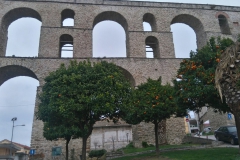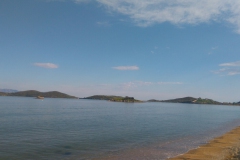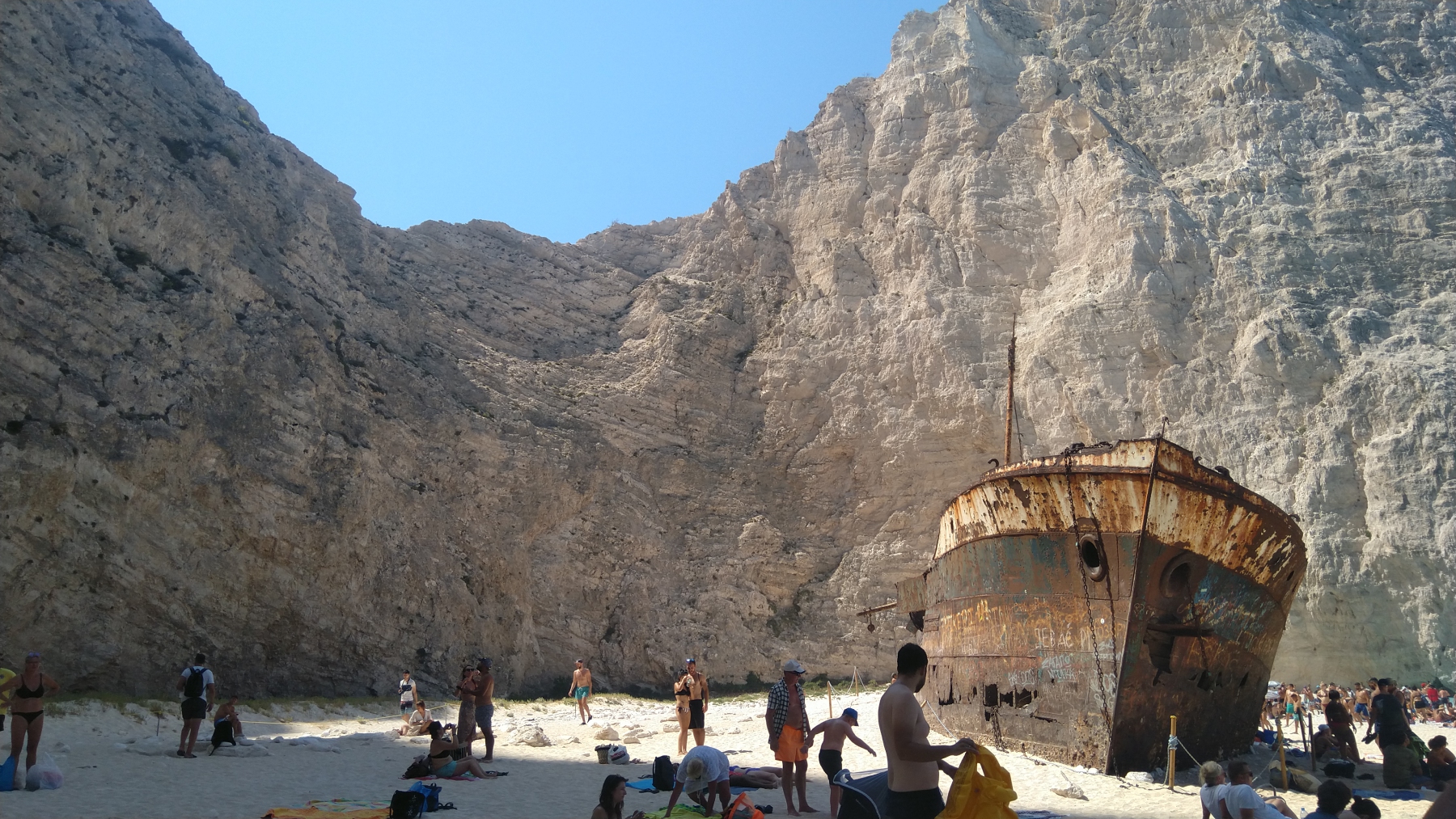Kavala is one of the loveliest cities of the Greek north, and a gateway to the region of Macedonia. It is a city that rises up from the sea like an amphitheater, and offers stunning views of the bay and the island of Thassos. It is a city that has witnessed the rise and fall of empires, the birth and death of legends, and the creation and destruction of art. It is a city that has something for everyone, whether you are interested in castles, churches, museums, or beaches. In this blog post, I will share with you some of the most important things to know before you visit Kavala, how to get there, what to do and see, and where to eat and stay.
What to Know Before You Visit Kavala
Before you pack your bags and head to Kavala, there are some things you should know to make your trip easier and more enjoyable. Here are some of the most important ones:
- Language: The official language of Kavala is Greek, but you will also hear some people speaking Turkish, Bulgarian, or Roma. Many people in Kavala can speak some English, especially in the tourist areas, but it is always polite and helpful to learn some basic Greek phrases, such as hello (γεια σου), thank you (ευχαριστώ), and excuse me (συγνώμη).
- Currency: The currency of Kavala is the euro (EUR). You can exchange your money at the airport, banks, or exchange offices, but you will usually get a better rate by using your debit or credit card at ATMs. You can also use your card to pay at most places, but it is always good to have some cash for small purchases, tips, or emergencies.
- Climate: Kavala has a Mediterranean climate, with hot and dry summers and mild and wet winters. The average temperature in Kavala is 16°C (61°F), but it can vary from 6°C (43°F) in January to 27°C (81°F) in July. The best time to visit Kavala is from May to October, when the weather is pleasant and the flowers are blooming. However, you can also visit Kavala in the winter, when the city is quieter and offers a different scenery and atmosphere.
- Transportation: Kavala has a good public transportation system, consisting of buses, taxis, and ferries. You can buy tickets at kiosks, vending machines, or on board, and you need to validate them before boarding. A single ticket costs 1.50 EUR and is valid for one ride on any bus or ferry. You can also buy a 24-hour ticket for 4 EUR, which is valid for unlimited rides on any bus or ferry. You can also use taxis, which are cheap and easy to find, but make sure to agree on the fare before you get in. You can also rent a car, a scooter, or a bike, which are more convenient and flexible, but also more expensive and risky.
- Safety: Kavala is a safe city, but like any place, it has some risks and dangers. You should be aware of pickpockets, scammers, and beggars, especially in crowded and touristy areas. You should also avoid walking alone at night in dark or isolated streets, and be careful when swimming, hiking, or driving, as there may be rocks, currents, or accidents. You should also respect the local laws and customs, and avoid any political or religious demonstrations. If you need any help or emergency, you can call 112, the European emergency number, or 100, the Greek police number.
How to Get to Kavala
There are many ways to get to Kavala, depending on where you are coming from and what your budget and preferences are. Here are some of the most common ones:
- By plane: Kavala has one main airport, Kavala International Airport (KVA), which is about 30 km from the city center. You can take a bus, a taxi, or a private transfer to reach your accommodation. The airport is served by many international and domestic flights, from low-cost to full-service airlines. You can also fly to other nearby airports, such as Thessaloniki (SKG) or Athens (ATH), and then take a bus or a train to Kavala.
- By ferry: Kavala is well connected by ferry to the mainland and other islands of the Aegean Sea. You can take a ferry from the ports of Thessaloniki, Volos, or Alexandroupoli, which are located on the northern coast of Greece, or from the islands of Thassos, Samothraki, Lemnos, or Lesvos, which are located on the eastern part of the Aegean Sea. You can buy ferry tickets online, at the port, or at authorized agencies, and you need to show them to the crew before boarding. A ferry ticket from Thessaloniki to Kavala costs 15 EUR per person and 60 EUR per car and takes about 3 hours. A ferry ticket from Volos to Kavala costs 25 EUR per person and 100 EUR per car and takes about 6 hours. A ferry ticket from Alexandroupoli to Kavala costs 10 EUR per person and 40 EUR per car and takes about 2 hours. A ferry ticket from Thassos to Kavala costs 4 EUR per person and 16 EUR per car and takes about 40 minutes. A ferry ticket from Samothraki to Kavala costs 8 EUR per person and 32 EUR per car and takes about 2 hours. A ferry ticket from Lemnos to Kavala costs 15 EUR per person and 60 EUR per car and takes about 4 hours. A ferry ticket from Lesvos to Kavala costs 20 EUR per person and 80 EUR per car and takes about 5 hours.
- By bus: Kavala has one main bus station, Kavala Intercity Bus Station, which is located near the city center and connected to the ferry port. You can take buses from many other cities in Greece, such as Athens, Patras, Ioannina, or Larissa, or from other countries in the Balkans, such as Bulgaria, Turkey, or Albania. You can buy bus tickets online, at the station, or at authorized agencies, and you need to show them to the driver before boarding. A bus ticket from Athens to Kavala costs 40 EUR and takes about 7 hours. A bus ticket from Patras to Kavala costs 50 EUR and takes about 9 hours. A bus ticket from Ioannina to Kavala costs 25 EUR and takes about 4 hours. A bus ticket from Larissa to Kavala costs 20 EUR and takes about 3 hours. A bus ticket from Sofia to Kavala costs 15 EUR and takes about 4 hours. A bus ticket from Istanbul to Kavala costs 20 EUR and takes about 5 hours. A bus ticket from Tirana to Kavala costs 25 EUR and takes about 6 hours.
What to Do and See in Kavala
Kavala is a city that has a lot to offer, and you can easily spend a week or more exploring its attractions. Here are some of the must-do and must-see things in Kavala:
- See the statues and monuments: Kavala is a city that is full of statues and monuments, which are part of its rich history and culture. You can see statues and monuments of various historical figures, such as Alexander the Great, Mehmet Ali, and Muhammad Ali, as well as symbols of the city, such as the Lighthouse, the Tobacco Warehouse, and the Lion of Kavala. You can also see some quirky and humorous statues, such as the Fisherman, the Mermaid, and the Donkey.
- Visit the Old Town: The Old Town is the oldest and most scenic part of Kavala, and a UNESCO World Heritage site. It is a maze of narrow streets and alleys, filled with shops, cafes, mosques, churches, and museums. You can shop for souvenirs, such as jewelry, pottery, carpets, and spices, or enjoy a cup of Greek coffee, a glass of ouzo, or a plate of meze. You can also visit some of the historical and cultural attractions, such as the Kavala Castle, the Kavala Aqueduct, the Imaret, and the Archaeological Museum.
- Explore the beaches: Kavala is blessed with some of the most beautiful and diverse beaches in Greece, ranging from sandy to pebbly, from organized to secluded, from calm to windy. You can enjoy swimming, sunbathing, snorkeling, surfing, or sailing on the crystal clear water, and admire the stunning scenery of the bay and the island. Some of the best beaches in Kavala are Kalamitsa, Batis, Perigiali, Rapsani, and Ammolo














